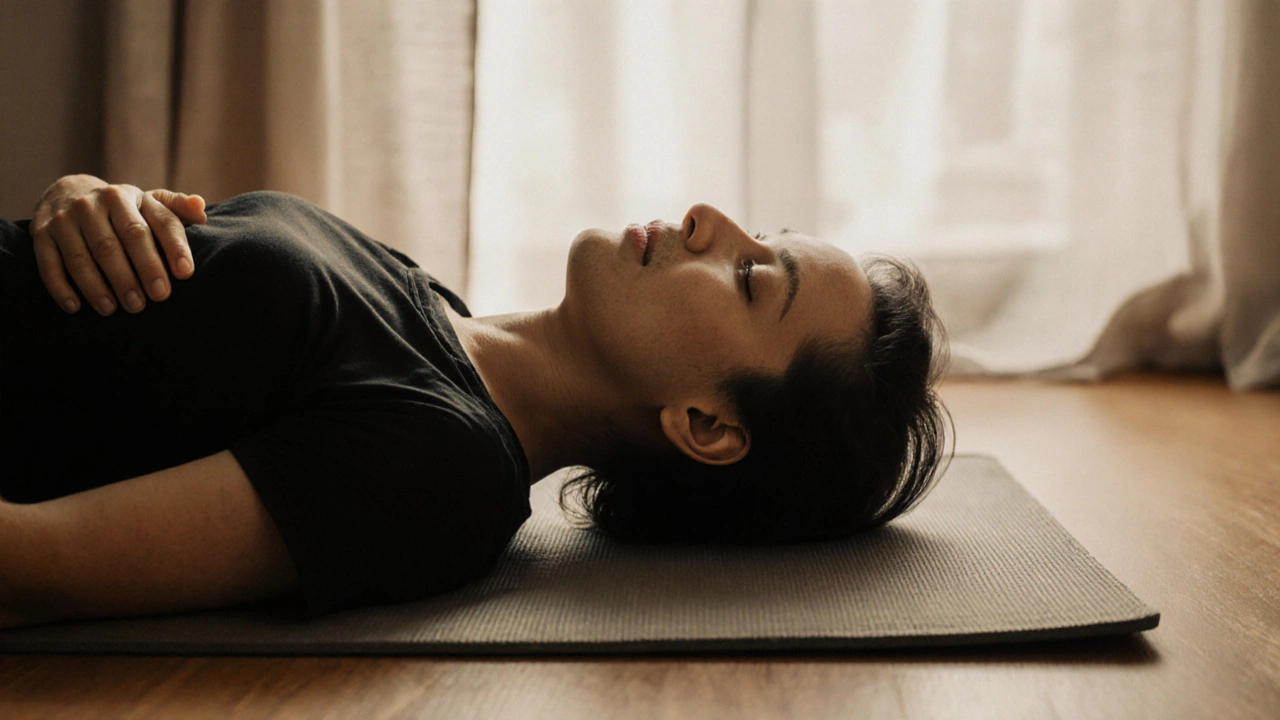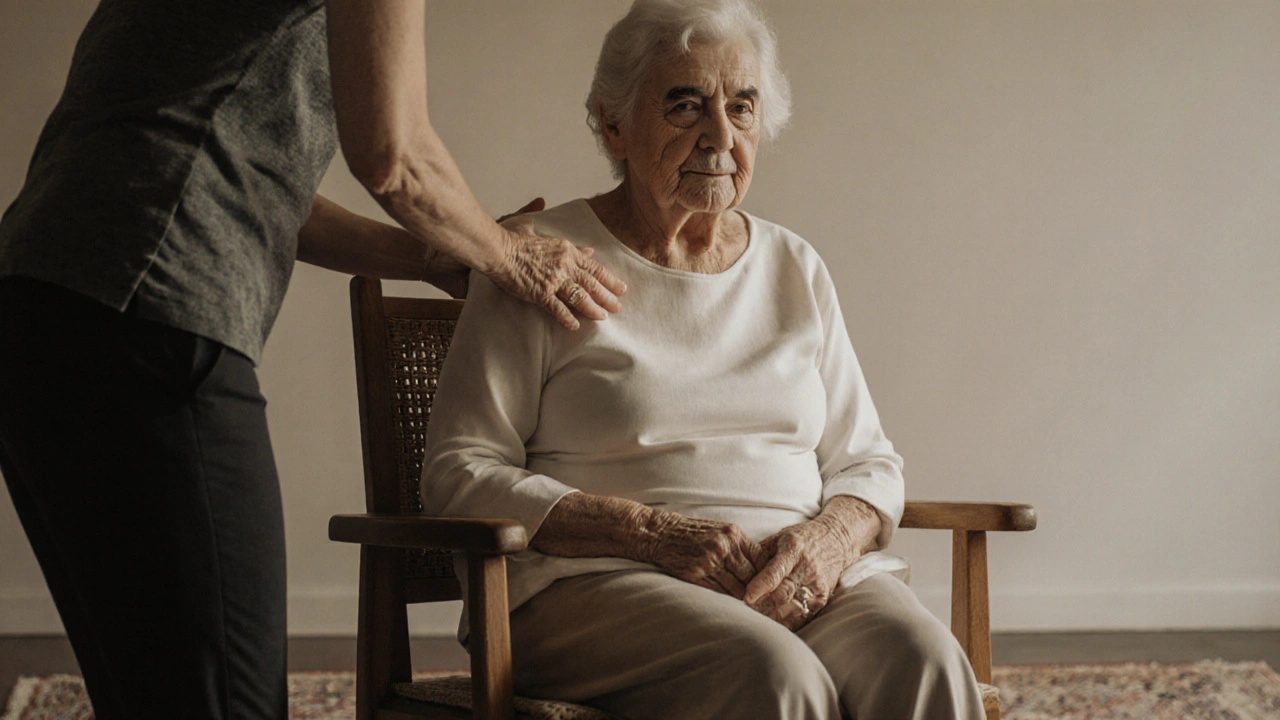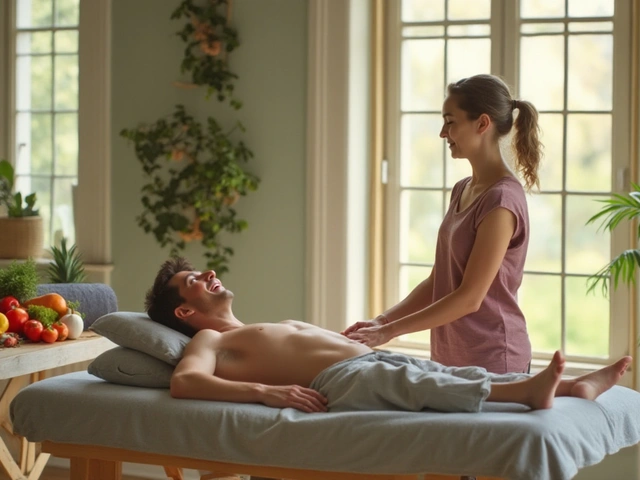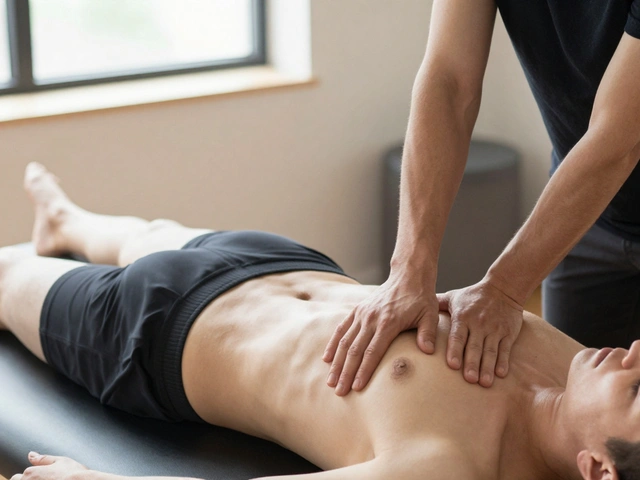Enhance Your Life with Feldenkrais Training: Move Better, Feel Lighter

Feldenkrais Benefits Quiz
Find Your Feldenkrais Fit
Answer a few simple questions to see how Feldenkrais might benefit your movement patterns and daily life.
Your Feldenkrais Potential
Based on your responses, Feldenkrais may help you in these areas:
What if the key to moving better, sleeping deeper, and feeling less pain wasn’t a new workout, a massage, or even a pill-but a quieter, slower way of paying attention to how your body already moves? That’s the core idea behind Feldenkrais training. It doesn’t ask you to push harder, stretch farther, or fix what’s broken. It asks you to notice what you’re already doing-and then gently change it.
What Exactly Is Feldenkrais Training?
Feldenkrais training is a form of movement reeducation developed by Moshe Feldenkrais, a physicist and judo practitioner, in the 1940s. After a serious knee injury left him unable to walk without pain, he began experimenting with how movement, posture, and nervous system habits affect healing. His method blends neuroscience, biomechanics, and learning theory into something simple: using gentle, guided movements to help the brain find more efficient ways to move.
It’s not massage. It’s not yoga. It’s not physical therapy in the traditional sense. Instead, it’s a learning process. You don’t do exercises to strengthen muscles-you explore movements to rewire how your brain controls them. People who’ve tried it describe it as “feeling like your body finally made sense.”
How It Works: The Brain Learns Through Feeling
Your brain doesn’t care about perfect form. It cares about what feels easy. If you’ve spent years slouching at a desk, lifting heavy boxes the wrong way, or tensing your shoulders when stressed, your brain has wired those patterns as “normal.” Over time, those habits cause stiffness, pain, or fatigue-even if your muscles aren’t weak.
Feldenkrais sessions-whether in group classes called Awareness Through Movement or private one-on-one lessons called Functional Integration-use slow, small movements to help your nervous system discover alternatives. For example, instead of telling you to “sit up straight,” a practitioner might guide you through a series of tiny head tilts and shoulder rolls while lying down. You’re not trying to get it right. You’re noticing: Which way feels lighter? Which way makes my breath easier?
Studies from the University of California and the Journal of Bodywork and Movement Therapies show that after 8-12 weeks of regular Feldenkrais training, participants reported significant reductions in chronic back pain, improved balance in older adults, and decreased muscle tension in people with repetitive strain injuries. The changes stick because the brain rewires itself-not because you’ve built new muscle, but because you’ve found a better way to use the ones you already have.
Who Benefits Most From Feldenkrais Training?
You don’t need to be injured or in pain to benefit. But these groups often see the biggest shifts:
- People with chronic pain-especially lower back, neck, or joint pain that hasn’t improved with stretching or strength training.
- Older adults-who want to move more freely, avoid falls, or reduce stiffness without high-impact exercise.
- Performers and athletes-dancers, musicians, and tennis players use it to refine coordination and prevent overuse injuries.
- People with stress or anxiety-many report feeling calmer after sessions because the method teaches the nervous system to shift out of fight-or-flight mode.
- Recovering from surgery or injury-it helps rebuild movement patterns without forcing the body.
One woman in Adelaide, 68, started after hip replacement surgery. She’d been told to do leg lifts and squats, but they hurt. After six Feldenkrais lessons, she could stand up from a chair without using her hands for the first time in years. “I didn’t strengthen my leg,” she said. “I just stopped fighting myself.”

What a Typical Session Feels Like
In a group class, you lie on a mat or sit in a chair while a teacher speaks softly, guiding you through a sequence of small, unusual movements. Think: “Gently roll your head side to side, as if you’re tracing a line on the ceiling with your ear.” No one is watching. No one is correcting you. You’re encouraged to move at your own pace-even if that’s just imagining the movement.
In a private session, you stay fully clothed and lie on a low table while the practitioner uses gentle, non-invasive touch to guide your limbs and torso. It’s not manipulation-it’s communication. The goal is to help you feel how your pelvis, spine, and ribs move together-or don’t. Many people fall asleep during these sessions. That’s normal. Your brain is processing.
Afterward, you might feel slightly dizzy, deeply relaxed, or oddly taller. That’s your nervous system recalibrating. The real change happens over the next few days: you notice you’re standing differently in line at the grocery store, or you stop clenching your jaw when you’re on the phone.
How It Compares to Other Movement Therapies
People often confuse Feldenkrais with yoga, Pilates, or physiotherapy. Here’s how it’s different:
| Approach | Goal | How It Works | Focus |
|---|---|---|---|
| Feldenkrais | Relearn movement patterns | Slow, exploratory movements guided by awareness | Brain-nervous system connection |
| Yoga | Flexibility, strength, mindfulness | Hold poses, breathe deeply, follow sequences | Body positioning and breath |
| Pilates | Core strength, posture | Controlled repetitions, often with equipment | Muscle activation |
| Physiotherapy | Recover function after injury | Exercises, manual therapy, modalities | Physical structure and tissue healing |
Feldenkrais doesn’t aim to make you stronger or more flexible. It aims to make you smarter in how you move. You might become more flexible as a side effect-but only because your brain stopped wasting energy on inefficient habits.
Where to Start
You don’t need to commit to 20 sessions to feel a difference. Many people notice a shift after just one or two.
- Look for certified practitioners through the Feldenkrais Guild of Australia or the International Feldenkrais Federation.
- Try a free online Awareness Through Movement class-many are available on YouTube or through local studios.
- Start with 10-15 minutes a day: lie on the floor and slowly roll your head side to side while breathing. Notice which direction feels easier. Don’t force it. Just observe.
- Don’t rush. The method works best when you give yourself permission to move slowly, even if it feels silly.
In Adelaide, studios like Movement Matters and The Body Workshop offer introductory packages. Most first sessions cost between $80-$120, with group classes around $25-$35. Many health funds offer rebates for certified practitioners.

What to Expect Over Time
After a few weeks, you might:
- Stand up from a chair without using your hands
- Notice you’re breathing more deeply while sitting at your desk
- Find yourself relaxing your shoulders without thinking about it
- Walk with less effort, even on uneven ground
- Feel less anxious because your body isn’t stuck in tension mode
After three to six months, many people report feeling “lighter,” “more present,” or “like they’ve known their body all along.” It’s not magic. It’s neuroplasticity-the brain’s ability to reorganize itself based on new experiences.
Common Misconceptions
- “I’m too stiff to try this.” That’s exactly why you should. The slower you move, the more your brain can learn.
- “It’s just relaxation.” While it’s calming, it’s not a spa treatment. It’s a learning process that changes how your nervous system works.
- “I need to be athletic.” No. People in wheelchairs, stroke survivors, and children with cerebral palsy have all benefited.
- “It’s pseudoscience.” Research from Harvard Medical School, the University of Sydney, and the NIH has documented its effects on motor learning, pain reduction, and neural plasticity.
Why This Matters Now
In a world that rewards speed, productivity, and performance, Feldenkrais offers something rare: permission to slow down. To notice. To let your body teach you-not the other way around.
It’s not about fixing yourself. It’s about remembering how your body was designed to move: effortlessly, efficiently, and without pain. You don’t need to be broken to benefit. You just need to be curious.
Can Feldenkrais help with chronic pain?
Yes. Many people with chronic back, neck, or joint pain find relief not by strengthening muscles, but by learning to move in ways that reduce strain. Studies show it’s particularly effective for pain linked to poor movement habits, not structural damage. It doesn’t cure arthritis, but it can help you move around it more easily.
How long does it take to see results?
Some people feel a difference after one session-like standing taller or breathing deeper. For lasting change, most people attend 6-12 sessions over 2-3 months. The key is consistency, not intensity. Even 10 minutes a day of mindful movement can create shifts over time.
Is Feldenkrais safe for older adults?
Extremely safe. The movements are slow, gentle, and done lying down or sitting. Many older adults use it to improve balance, reduce fall risk, and regain confidence in movement. It’s often recommended by geriatric physiotherapists as a low-impact way to maintain mobility.
Can I do Feldenkrais at home?
Absolutely. There are hundreds of free Awareness Through Movement audio lessons available online. All you need is a quiet space and a mat or towel. The real benefit comes from paying attention-not from doing the movements perfectly. Even imagining the movement can activate the same brain pathways.
Do I need special clothing or equipment?
No. Wear loose, comfortable clothes. No shoes, no socks-just bare feet or socks on a mat. A folded towel or pillow for head support helps. That’s it. No props, no machines, no special gear.
Is Feldenkrais covered by health insurance?
In Australia, many private health funds cover Feldenkrais lessons under “allied health” or “alternative therapies” if the practitioner is certified by the Feldenkrais Guild. Check your policy or call your provider. Group classes are rarely covered, but private sessions often are.





